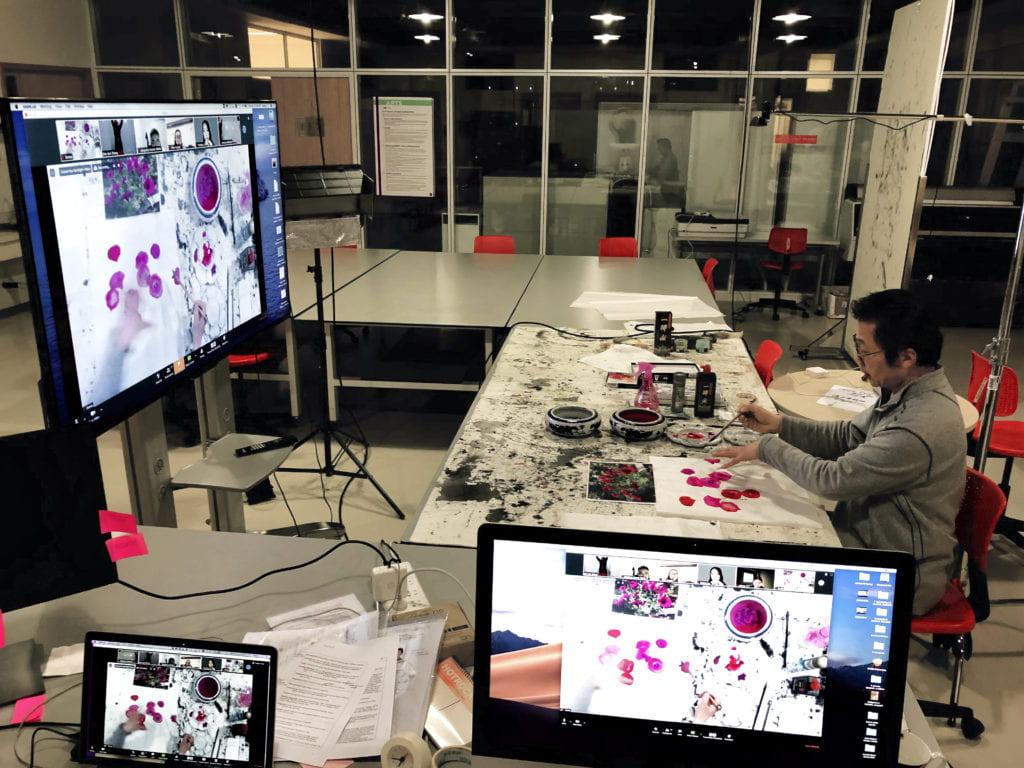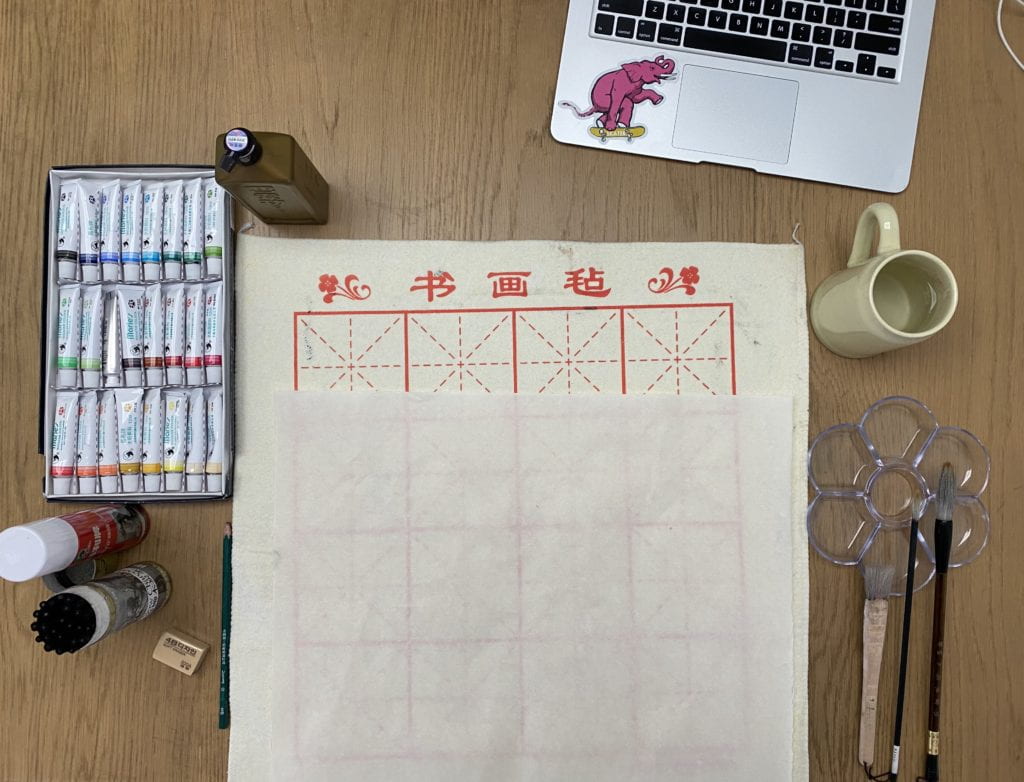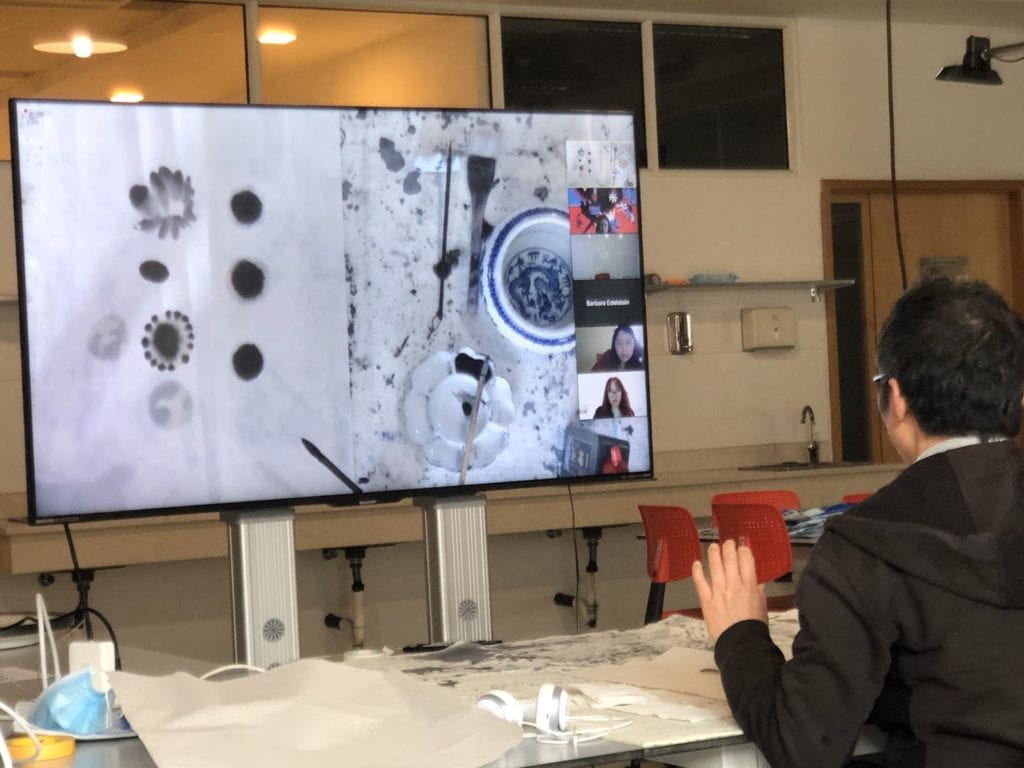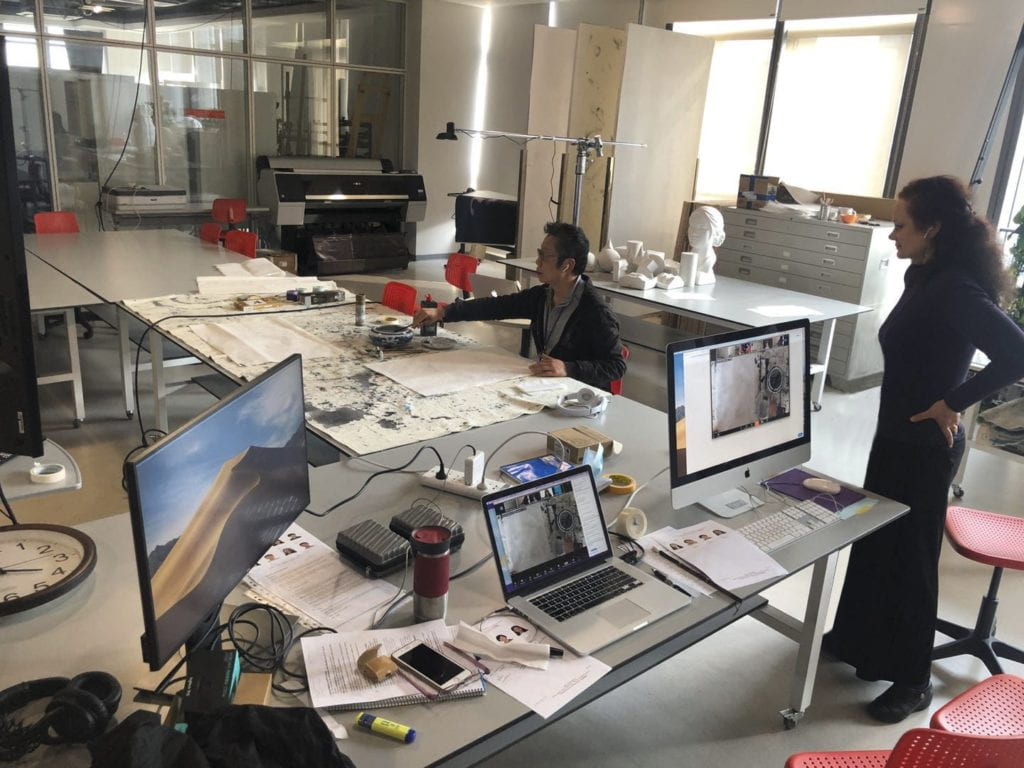Courses: Introduction to Studio Art, Projects in Studio Art
Instructors: Barbara Edelstein, Jian-Jun Zhang
Students enrolled: 15
Technology used: NYU Classes, Zoom, PowerPoint, Google Slides
Clinical Associate Professors Barbara Edelstein and Jian-Jun Zhang are teaching live art classes to 15 students using three computers, a camera, and a speaker in their classroom studio space on campus. The duo has been able to teach in the same space all semester because they also happen to be married, and have been socially isolating together. As most students are based in China, it is possible to provide synchronous demonstrations and live classroom discussions with help from NYU Shanghai’s Research and Instructional Technology Services (RITS) department and IT.
One screen shows Edelstein speaking, the second shows Zhang, and the third shows what is happening on the demo table so that students can simultaneously hear their professor’s voices and see their hands while they work. The third camera is useful in demonstrating, for example, different brushwork, ink, color, and line techniques.

Edelstein uses a fourth monitor to see her PowerPoint notes as she presents to the class. “If JJ is doing the demo, they see his hands on the table, they hear his voice, and they see me on the screen,” says Edelstein.
Students are able to follow along and try their hand at the techniques from home because the instructors worked with their art supplies distributor to mail out packets of art supplies to each student before the course commenced. The individual packs include specific types of paper, brushes, color, ink, and a plate for mixing.

Sharing Critiques Over Google Slides and Lecturing on Zoom
At the start of every class, students upload homework for the class to a shared Google Slides presentation. The app becomes an interactive platform for a group art critiques. Edelstein puts the slideshow on the main screen before the discussion begins, and students engage with each other and the professors about ideas, concepts, and techniques they’ve been exploring since the previous lesson. This closely mimics the environment of an in-person class, where students would hang their works up on boards before presenting.
After the critique, Edelstein or Zhang usually give a lecture on concepts, techniques, and approaches from historical and contemporary art. Some of the subjects include Chinese art and how contemporary artists use traditional techniques including gongbi bai miao (line drawing) in their work and the unique approaches to color in Chinese art. During the lecture, students keep their microphones on so that they can ask questions at any time, and can also “raise their hands” by using the hand-wave emoticon on Zoom.
The instructors begin their introductory course with lecture-based class sections but gradually transition into more studio work and demos once students have built a foundational understanding of underlying concepts.
The instructors say that students enjoy talking about their work, and have appreciated the technical demonstrations that follow each lecture. Edelstein and Zhang also show students demos by other artists, including a demo on traditional Chinese ink painting by Chen Xin Mao 陈心懋, head of the art department at East China Normal University.

Challenges and Lessons Learned
The instructors say that it has been a challenge to help students improve techniques without physically inhabiting the same space. In a normal classroom setting, Edelstein and Zhang would move around the room giving immediate feedback to students, or painting in conjunction with their student.
So far, the workaround to this issue has been asking students to record themselves with their cameras and hold their work up to the screen to show progress so that the instructors can provide feedback in real-time.

The live courses are recorded so that students can refer back to them later. Edelstein notes that the live classes are necessary because “it’s important for everyone to be able to hear each other and learn from each other as they work on their individual pieces.”
The instructors say that their experiments with new approaches to art instruction have paid off overall. “We tried to think of everything that [the students] needed. Everyone got their supplies, and we haven’t restricted what size of artwork they’re doing,” says Edelstein. “They’ve been uploading their paintings, they’re doing really good work, and we’re really happy.”